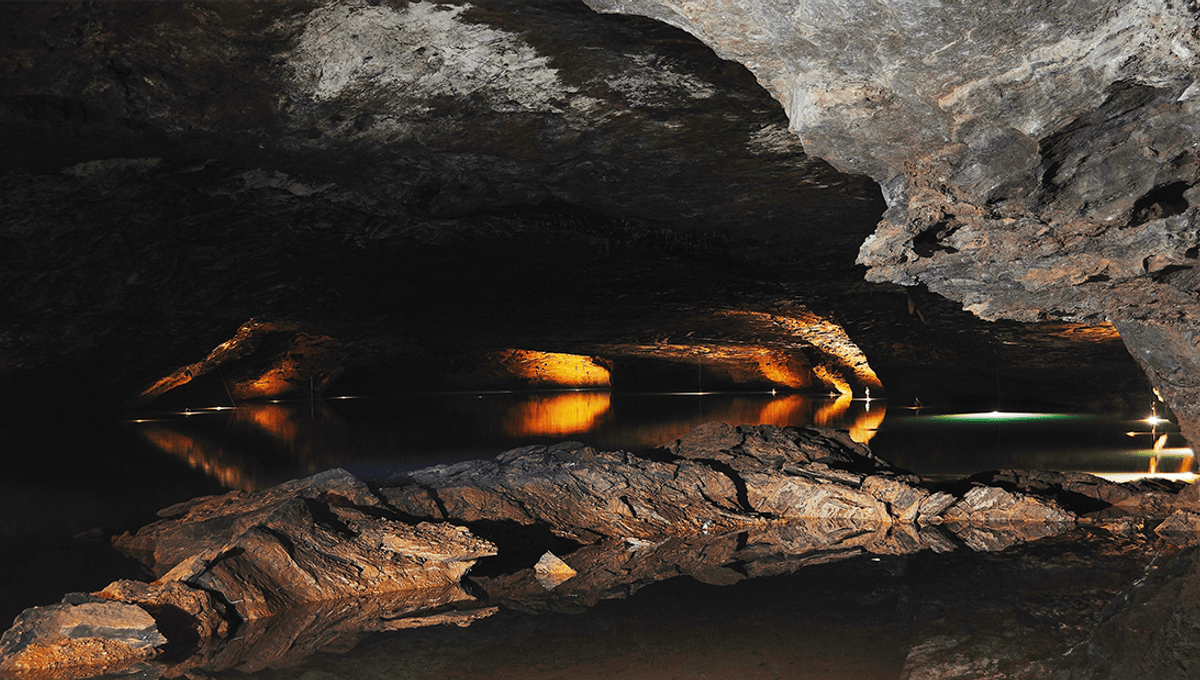
In 1905, a 13-year-old boy was playing in a cave in Craighead Caverns, a giant system of caves in between Sweetwater and Madisonville, Tennessee, as he often did, when he stumbled across an unexplored opening and squeezed his way through.
The caves themselves had been known about since the time of the Cherokee, the Indigenous people of the Southeastern Woodlands of the United States. Artifacts including pottery, jewelry, arrowheads, and weapons have been found inside a chamber known as “the council room”, itself nearly a mile from the cave system’s entrance. In the 1800s, colonizers from Europe also found the caves, using the cool environment to store potatoes and other vegetables, while a Confederate soldier left a little graffiti – the number 1863, torched onto a wall, likely in 1863 CE according to carbon dating.
The cave was also home to a giant Pleistocene jaguar, which made tracks there after being lost there some 20,000 years ago, before falling and dying in a crevice as it tried to escape the darkness.
As far as we know, the “lost sea” beneath the cave was not discovered until a 13-year-old crawled through a hole in the wall, and made the find of a lifetime.
“The lake was discovered by Ben Sands,” Craighead Caverns tour guide Savannah Dalton told CBS News in 2019. “A 13-year-old boy who had actually crawled through a tunnel that was the size of a bicycle tire for 40 feet before he dropped down into the lake itself and actually waded out into about knee-deep water. It was a lot smaller when he came through. But we’ve blasted it out since.”
Sands found himself inside a gigantic room half-filled with water, with a torch not powerful enough to see the other side. In the room, which had perhaps never been seen by human eyes before, he began throwing mudballs in every direction he could, but heard nothing but the splash as they fell into the water.
The area where Sands first fell into is now home to around 300 rainbow trout. These animals were not native to the cave, and hadn’t survived cut off from the rest of the world, but were introduced after the cave’s discovery. The hope was that by putting the trout into the lake, they may escape and reveal entrances to other area of the lake. With no food supply, they learned to wait for their food from boatmen arriving with some of the 150,000 tourists a year who chose to visit the cave.
“They’re down here long enough that they do lose a small portion of both their eyesight and their color,” Dalton added. “The lighting of course is not natural sunlight, so they can’t really maintain that pigment.”
That part of the lake has now been explored a little better, and we now know it is around 243 meters (800 feet) long by 67 meters (220 feet) wide. But that is the part of the lake which we can see. Underwater, the lake leads off to other halls. Divers have explored some areas of the lake, and mapped over 13 acres (5.2 hectares) of water, but still have not found the lake’s end. In fact, the National Natural Landmark is thought to be the largest underground lake in North America.
Source Link: A 13-Year-Old Boy Found A "Lost Sea" Beneath The US. It's So Vast, It Has Never Been Fully Explored